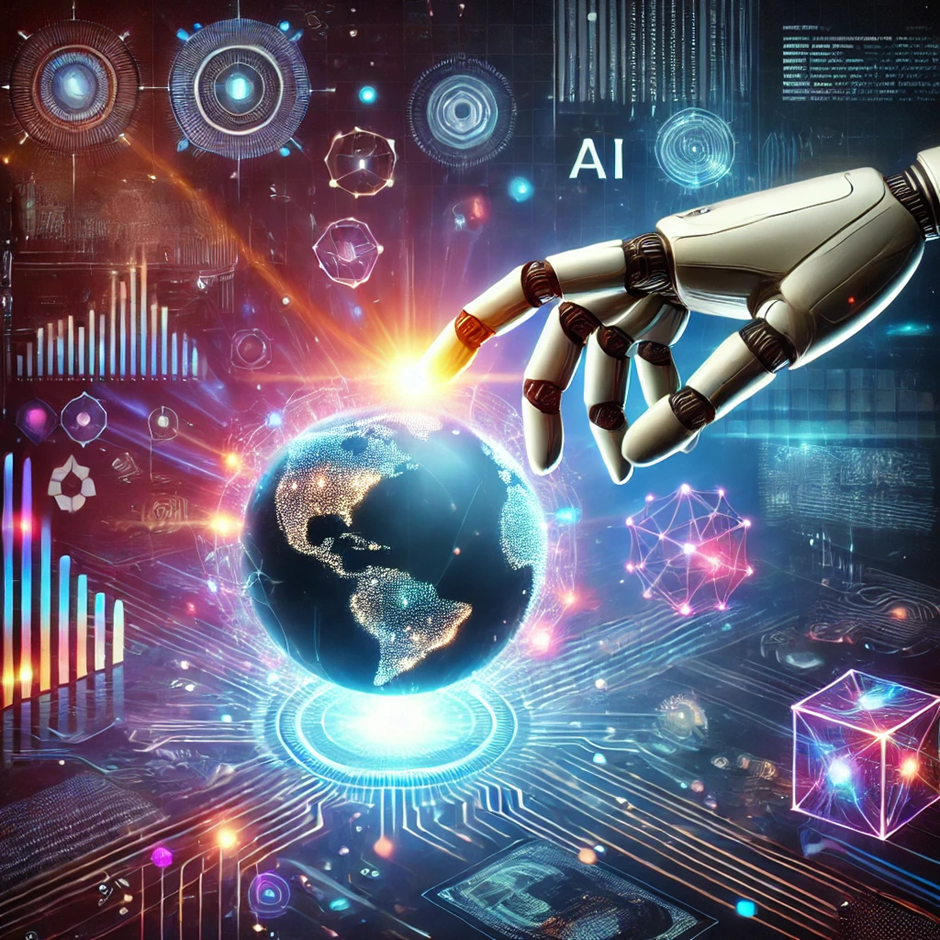Real-Life Examples of AI Changing the World prove how artificial intelligence is transforming industries, enhancing lives, and shaping the future. AI is no longer just a futuristic concept; it is actively impacting healthcare, finance, transportation, and even entertainment. In this article, we explore real-world applications, showcasing how AI is improving efficiency, decision-making, and automation.
1. AI in Healthcare: Revolutionizing Diagnosis and Treatment
AI-powered systems are helping doctors diagnose diseases more accurately and efficiently. Machine learning algorithms analyze medical images, detect abnormalities, and even predict patient outcomes. For example:
- IBM Watson Health assists in diagnosing cancer and recommending personalized treatments.
- Google DeepMind’s AI predicts eye diseases with a 94% accuracy rate.
- AI chatbots provide 24/7 healthcare support and early diagnosis.
AI-Powered Cancer Diagnosis
A study by Memorial Sloan Kettering Cancer Center found that AI-driven diagnostic tools improved early cancer detection rates by 15%, allowing doctors to begin treatment sooner. This not only improves patient survival rates but also reduces the costs of late-stage treatments.
Pros:
- Faster and more accurate diagnoses.
- Reduced workload for healthcare professionals.
- Enhanced patient care with personalized treatment plans.
Cons:
- Potential ethical concerns regarding patient data privacy.
- Dependence on high-quality data for accurate results.
2. AI in Finance: Fraud Detection and Smart Trading
Banks and financial institutions rely on AI to detect fraud, manage risks, and optimize trading strategies. Some key applications include:
- AI-powered fraud detection systems identify suspicious transactions instantly.
- Robo-advisors offer automated investment advice.
- AI algorithms analyze financial trends to predict market fluctuations.
AI-Driven Fraud Prevention
JPMorgan Chase implemented an AI-based fraud detection system, which reduced fraudulent transactions by 50% within a year. This saved the bank millions while improving security for customers.
Pros:
- Increased efficiency in financial operations.
- Enhanced security through real-time fraud detection.
- Improved investment decisions with AI-driven analysis.
Cons:
- Risk of over-reliance on AI without human oversight.
- Potential job displacement in the financial sector.
3. AI in Transportation: Self-Driving Cars and Smart Traffic Systems
Self-driving cars and AI-powered navigation systems are revolutionizing transportation. Companies like Tesla, Waymo, and Uber use AI for:
- Autonomous driving technology.
- Smart traffic management to reduce congestion.
- AI-powered ride-sharing optimization.
AI in Tesla’s Autopilot
Tesla’s AI-driven autopilot system has significantly reduced accidents caused by human error. According to Tesla, vehicles using Autopilot have a crash rate of 0.2 per million miles compared to 0.6 for human-driven cars.
Pros:
- Increased road safety through automation.
- Reduced traffic congestion with smart AI-driven systems.
- Lower fuel consumption through optimized routes.
Cons:
- High development and implementation costs.
- Regulatory and safety concerns still need addressing.
4. AI in Retail: Personalized Shopping and Inventory Management
Retailers use AI to personalize customer experiences, optimize inventory, and streamline supply chains. Examples include:
- AI chatbots assist customers in online shopping.
- Personalized product recommendations based on browsing history.
- AI-powered demand forecasting to prevent stock shortages.
Amazon’s AI-Powered Recommendations
Amazon’s AI-based recommendation system generates 35% of its total sales by suggesting products based on customer preferences and past behavior.
Pros:
- Improved customer experience with personalized recommendations.
- Better inventory management reducing losses.
- Increased sales and profitability for businesses.
Cons:
- Privacy concerns over data collection.
- Smaller retailers may struggle to implement AI.
5. AI in Education: Smart Learning Systems
AI-driven educational platforms adapt lessons to student needs, making learning more effective. Some innovations include:
- AI-powered tutors offering personalized study plans.
- Automated grading systems reduce teachers’ workload.
- AI-driven language learning apps improving engagement.
AI in Duolingo
Duolingo uses AI to personalize language lessons, increasing user retention by 50%. The AI tailors exercises based on each user’s strengths and weaknesses.
Pros:
- Personalized learning paths for students.
- Increased accessibility to quality education.
- Reduced workload for educators.
Cons:
- Lack of human interaction in learning.
- Potential over-reliance on technology.
6. AI in Manufacturing: Automation and Predictive Maintenance
Factories use AI to enhance productivity, minimize errors, and predict equipment failures. Real-world applications include:
- AI-powered robots assemble products with precision.
- Predictive maintenance reduces machine downtime.
- AI-driven quality control detects defects instantly.
AI in General Electric
GE implemented AI-based predictive maintenance in its factories, reducing equipment failures by 30% and improving overall efficiency.
Pros:
- Higher production rates and efficiency.
- Reduced costs through predictive maintenance.
- Enhanced product quality control.
Cons:
- Job losses due to automation.
- High initial investment costs.
7. AI in Entertainment: Content Creation and Recommendations
AI is transforming the entertainment industry by creating content, personalizing recommendations, and enhancing user experiences. Examples include:
- AI-generated music, movies, and artwork.
- Streaming platforms like Netflix and Spotify use AI to suggest content.
- AI-driven virtual influencers and gaming characters.
Pros:
- More engaging content tailored to user preferences.
- Increased efficiency in content production.
- New creative opportunities for artists and developers.
Cons:
- Concerns about authenticity and originality.
- Ethical concerns over deepfake technology.
8. AI in Cybersecurity: Protecting Digital Assets
With cyber threats on the rise, AI helps detect and prevent cyberattacks. Key applications include:
- AI-powered firewalls identify and block threats in real time.
- Machine learning algorithms detecting unusual activity.
- AI-driven password management and authentication systems.
AI in Microsoft Defender
Microsoft integrated AI into its cybersecurity systems, detecting and mitigating threats 30% faster than traditional methods.
Pros:
- Improved cybersecurity defenses.
- Faster threat detection and response.
- Reduced risk of data breaches.
Cons:
- Hackers are also using AI to develop more advanced threats.
- High implementation costs for businesses.
9. AI in Agriculture: Precision Farming and Crop Monitoring
AI-powered solutions help farmers increase crop yields, reduce waste, and optimize resources. AI applications in agriculture include:
- Drones and AI-driven sensors monitoring soil health.
- Automated irrigation systems reducing water waste.
- AI-powered pest detection preventing crop damage.
10. AI in Space Exploration: Autonomous Robots and Data Analysis
AI is advancing space exploration by enabling autonomous robots, analyzing astronomical data, and assisting in mission planning. Notable examples include:
- NASA’s AI-driven Mars rovers navigating terrain independently.
- AI-powered telescopes identifying distant galaxies.
- AI-assisted space mission simulations predicting outcomes.
Conclusion
AI is rapidly reshaping industries, improving lives, and tackling complex challenges across the globe. From breakthroughs in healthcare to advancements in space exploration, the transformative potential of AI is becoming increasingly evident. AI is also becoming more accessible in our daily lives, with a growing number of free AI tools that simplify tasks and enhance productivity. These tools include AI-powered chatbots for content creation, AI image and video generators, AI writing and summarization assistants, and AI-driven speech-to-text converters, all designed to empower individuals and streamline workflows.

